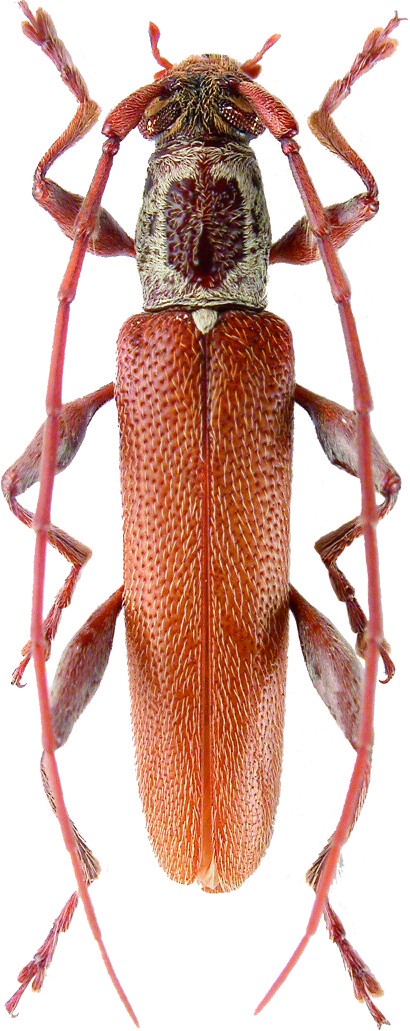| Author |
 Topic Topic  |
|
|
Sergi
Member Rosenbergia
   
Spain
1748 Posts |
 Posted - 27/09/2015 : 18:45:49 Posted - 27/09/2015 : 18:45:49



|

175.23 KB
From Borneo, Sabah, Trus Madi. Size: 11 mm
Ceresium sp. |
Edited by - Gerard on 27/09/2015 19:23:50 |
|
|
Capitaine
Scientific Collaborator
   
France
1850 Posts |
 Posted - 28/09/2015 : 11:19:25 Posted - 28/09/2015 : 11:19:25



|
| Looks like C. delaunei (Lameere,1893) |
Claude |
 |
|
|
dryobius
Member Rosenbergia
   
USA
1889 Posts |
 Posted - 28/09/2015 : 14:06:33 Posted - 28/09/2015 : 14:06:33



|
| I have this species in my collection, along with several very similar species. There are many undescribed Ceresium in Borneo, too. I'll try to get a name for this later. |
 |
|
|
Sergi
Member Rosenbergia
   
Spain
1748 Posts |
 Posted - 28/09/2015 : 14:44:51 Posted - 28/09/2015 : 14:44:51



|
| Thank you to both, there are a lot of Ceresium...... |
 |
|
|
dryobius
Member Rosenbergia
   
USA
1889 Posts |
 Posted - 30/09/2015 : 23:53:56 Posted - 30/09/2015 : 23:53:56



|
| It looks like Ceresium humerale Schwarzer, 1931. Holzschuh has identified many of my Ceresium species, and he undoubtedly studied the types before he described some new species from Sabah. The pubescence and punctation on the pronotum, as well as the shape and size of the pronotum can be used to separate the species. And if the pubescence on the pronotum has been rubbed off, it becomes impossible to identify these species. At this time, I have about 10 Callidiopini (mostly Ceresium) from Sabah that I can't identify. I'm sure there must be many more new species there. |
 |
|
|
Sergi
Member Rosenbergia
   
Spain
1748 Posts |
 Posted - 01/10/2015 : 08:55:05 Posted - 01/10/2015 : 08:55:05



|
| Thank you very much Dan for your explanation! |
 |
|
|
Gerard
Scientific Collaborator
    
France
5354 Posts |
 Posted - 01/01/2016 : 11:50:52 Posted - 01/01/2016 : 11:50:52



|
| Ceresium aemulator Holzschuh, 2015 |
 |
|
|
dryobius
Member Rosenbergia
   
USA
1889 Posts |
 Posted - 01/01/2016 : 20:02:17 Posted - 01/01/2016 : 20:02:17



|
This is the type of C. aemulator. The pronotom has a small, longitudinal callous in the basal central area. This type of character is usually a diagnostic feature on species of Ceresium. The differences between some Ceresium species is very subtle.

141.46 KB |
 |
|
| |
 Topic Topic  |
|


